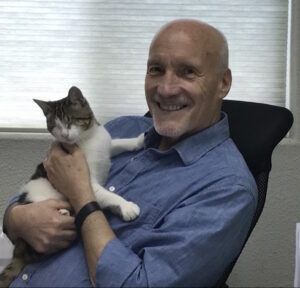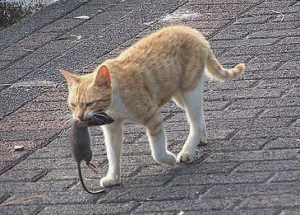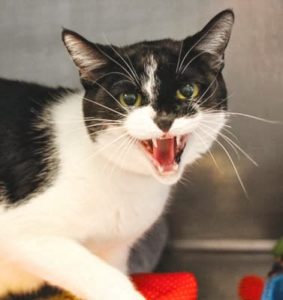Los Angeles, August 29, 2019 – The City of Los Angeles has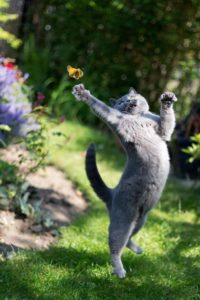 prepared a Draft Environmental Impact Report (EIR) to evaluate the potential environmental effects of the proposed Citywide Cat Program (proposed Project) that addresses free-roaming (feral or stray) cats in the City. The City is requesting input on the Draft EIR from public agencies, residents, and other interested project stakeholders.
prepared a Draft Environmental Impact Report (EIR) to evaluate the potential environmental effects of the proposed Citywide Cat Program (proposed Project) that addresses free-roaming (feral or stray) cats in the City. The City is requesting input on the Draft EIR from public agencies, residents, and other interested project stakeholders.
Project Background: In 2006, the City’s Department of Animal Services began to implement a “trap, neuter, return” (TNR) policy and program for free-roaming cats. The City also distributed vouchers to be used for free-roaming cat spay or neuter surgeries, issued cat trapping permits, and otherwise provided support and referrals to community groups that engage in TNR programs. In 2008, the City was sued, and in 2010 the Los Angeles Superior Court issued an Injunction which prohibited the City from further implementing the TNR policy and program without completing an environmental review process in compliance with CEQA (Case No. BS115483). The City prepared a Mitigated Negative Declaration (MND) in 2013, but ultimately decided to modify the proposed Project and prepare an EIR. The scoping process for the EIR began in 2017.
Project Description: Under the proposed Project, the City would: Directly engage in or make available funds for the spay/neuter of free-roaming cats that may be returned to where they were found, relocated to a working cat program, or adopted; Make amendments to the City of Los Angeles Administrative Code (LAAC) to broaden the permitted use of Animal Sterilization Funds and to the City of Los Angeles Municipal Code (LAMC) regarding the definition of a cat kennel; Implement a modified trap, neuter, and return (TNR) program that includes facilitation of trapping, neutering, and returning, TNR-related community education and outreach and collaboration with TNR organizations, and use of incentives to encourage the capture, sterilization, and release of free-roaming cats, including to TNR groups who may return the cats to free-roaming status; Publish and implement program guidelines and ecological conservation measures; and Create a working cat program.
Project Objectives: Broadly stated, the purpose of the proposed Project is to assist in achieving the City’s no kill goal and support the City’s adoption of TNR as the preferred method of addressing the free-roaming cat population in the City. The objectives of the proposed Citywide Cat Program include: Facilitating spaying and neutering of cats in the City; Reducing the relative number of free-roaming cats in the City over time; Facilitating more public and community education on animal-related topics, including free-roaming cats; Training animal services center staff members on cat management programs and engage in collaborative efforts with local rescue groups to help respond to and address free-roaming cat issues; Further implement the City’s no-kill policy by reducing the rate of euthanasia of cats in City animal services centers; and Establishing TNR as the preferred policy to humanely address free-roaming cats.
Environmental Impacts: The analysis contained in the Draft EIR determined that the proposed Project would not result in any significant environmental impacts. No mitigation is required.
Public Review Period: The Draft EIR public review and comment period begins August 29, 2019 and ends on October 28, 2019. The Draft EIR is available online at the Bureau of Engineering website: https://eng.lacity.org/citywide-cat-program-e1907610
Hard copies may also be viewed at the following locations:
- Los Angeles Central Library located at 630 W 5th St, Los Angeles, CA 90071.
- City of LA, Bureau of Engineering, 1149 S. Broadway, 6th Floor, Los Angeles, CA 90015
- North Central Animal Services Center, 3201 Lacy Street, Los Angeles, CA 90031
- South LA Animal Services Center, 1850 West 60th Street, Los Angeles, CA 90047
- West LA Animal Services Center, 11361 West Pico Blvd, Los Angeles, CA 90064
- Harbor Animal Services Center, 957 North Gaffey Street, San Pedro, CA 90731
- East Valley Animal Services Center, 14409 Vanowen Street, Van Nuys, CA 91405
- West Valley Animal Services Center, 20655 Plummer Street, Chatsworth, CA 91311
Public Meeting: A public meeting to receive comments on the Draft EIR will be held on Monday, October 7, 2019 at 6:00 p.m. at the Ramona Hall Community Center, 4580 N Figueroa St, Los Angeles, CA 90065.
Comments: Please send comments on the Draft EIR to:
Dr. Jan Green Rebstock
City of Los Angeles
Public Works, Bureau of Engineering
Environmental Management Group
1149 S. Broadway, 6th Floor, Mail Stop 939
Los Angeles, CA 90015-2213
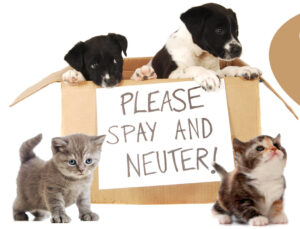 A Path to Preventing Animal Welfare Issues
A Path to Preventing Animal Welfare Issues
